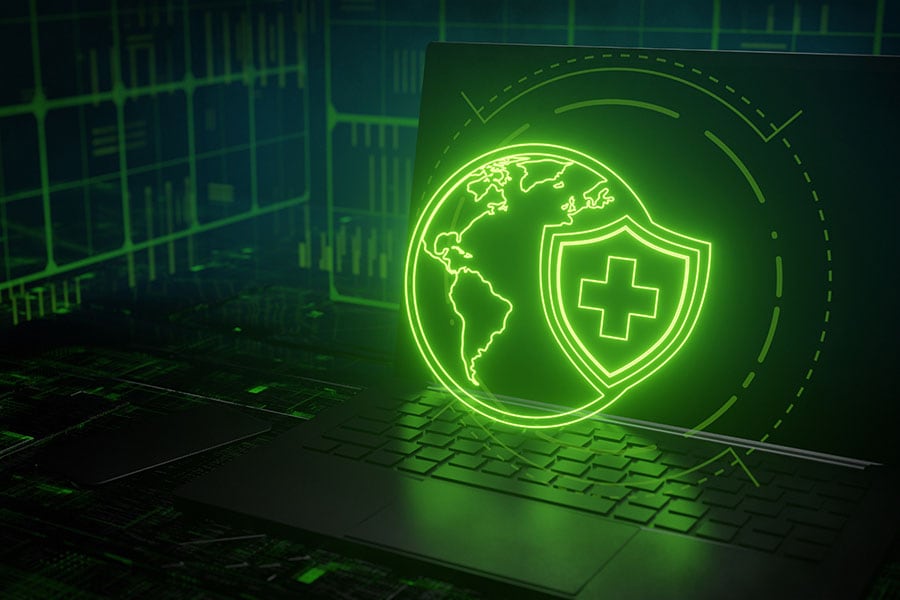
5 ways Indian medical administrations can boost hospital cyber-security
Managerial learnings from the AIIMS cyber-attack underline the urgent need for solutions that can enable the highly vulnerable healthcare organisations in India to meet acceptable cyber-security standards
 There is no culture for cyber-security in medical organisations and enterprises that need them most when healthcare is rapidly going digital.
Image: Shutterstock
There is no culture for cyber-security in medical organisations and enterprises that need them most when healthcare is rapidly going digital.
Image: Shutterstock
On November 23, 2022, the All India Institute of Medical Science (AIIMS) New Delhi—the premier Indian national medical institute’s entire digital infrastructure collapsed due to a ransomware cyber-attack launched by Chinese hackers. Dubbed by experts as one of the biggest cyber-attacks on Indian critical infrastructure, the cyber-beach led to the compromise of sensitive medical and personal data of approximately four crore patients. On a bigger social impact scale, the breach ensured that effective digitally-driven (automated) medical care within the hospital was disrupted—much to the scare of patients and their kin. This disruption took the shape of system processes within the hospital. Processes had to be run manually—which often can't bear the time-critical patient service demand given the scarce resource (employee time and effort) supply. In this article, we state the major cybersecurity issues that plagued AIIMS—and true of most other hospitals in the country—and provide a gist of management action items to boost cybersecurity in hospital environments.
Cyber-Security Issues in the AIIMS Case and Medical Hospitals in General
A post-mortem of the AIIMS cyber-attack broadly revealed a tale of medical administration negligence despite the Indian government’s recent push to digitise healthcare. The main negligence points sticking out were:- The AIIMS department responsible for IT infrastructure did not have access to database, security, and system administrators despite the National Informatics Center (NIC) recommending them to do so.
- A disaster backup mechanism to maintain continuity of operations—reflective of cyber-resilience, in the event of a primary site failure—did not exist.
- There was no service-level agreement between AIIMS and the NIC, for the latter to be accountable for any lapses in service. AIIMS operated its own servers and was responsible for server OS and security software updates—though in reality, no such updates were done over time.
- Cyber-safety and resilience were never given importance inside AIIMS—reflecting a lack of cyber-security culture. As evidence of such a statement, (a) no workshops or seminars educated the medical IT staff and doctors about cyber-hygiene, (b) no NIC-recommended security audits were done, (c) many of the medical employees used personal Gmail for official activities instead of their official AIIMS email.
It should be emphasized that the above negligence factors are not restricted to AIIMS only and follow all other Indian hospitals throughout the country. In simple words, there is no culture for cyber-security in medical organisations and enterprises that need them most when healthcare is rapidly going digital. In the case of hospitals in general, the need for medical staff to access patient information and deliver care quickly is often orthogonal to adopting cyber-security best practices. As an example, it is common practice across employees of many healthcare providers to leave their workstations or laptops unlocked and/or unattended while expediting access to patient care information to provide comprehensive care. Moreover, clinicians are often given the power of discretion to adopt and install IT-driven health products that may serve patient benefit but might not satisfy the cyber-security requirements of enterprise-wide IT.
In addition, financial constraints, weakly cyber-protected legacy medical devices, and medical employees’ lack of knowledge and understanding—due to the unavailability of workshops and cyber-hygiene programs—of safety risks to patients that cyber threats pose to increase the latter’s impact on cyber-security in the hospitalised medical care sector. To drive home this point, many IT security teams (if they exist within a medical enterprise) have difficulty demonstrating the financial importance of cyber protections to C-suites and the value of proactive risk mitigation without experiencing a breach or data loss. A medical C-suite or board primarily consists of members who hardly have a background in cyber-security and, more importantly, are concerned with how the organisation is advancing on commercial business KPIs (e.g., revenue). They cannot gauge how cybersecurity can have a direct impact on the KPIs, and the CISOs cannot usually translate, to the board, technical jargon effectively into KPI-impacting control factors. Consequently, many C-suites surprisingly argue that they cannot budget for cyber-security even when they have sufficient resources. One of the main reasons, apart from the ones just mentioned, is their behavioural bias of cyber-attacks having a far lower probability than in practice. The other important reasons, especially for small and medium hospitals allocating insufficient cyber risk or resilience management budgets are the lack of
[This article has been published with permission from IIM Calcutta. www.iimcal.ac.in Views expressed are personal.]







